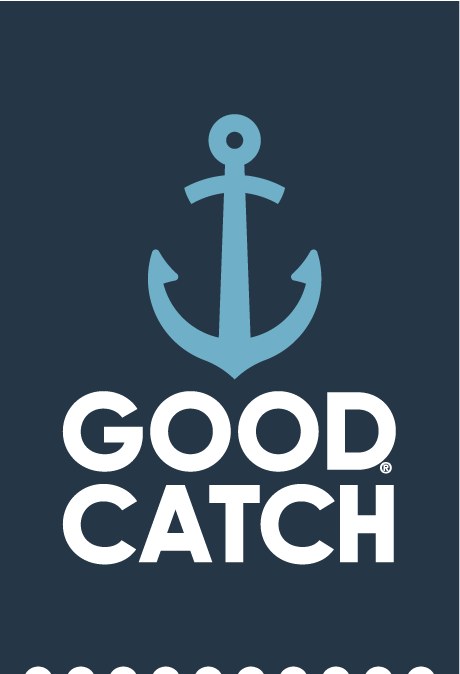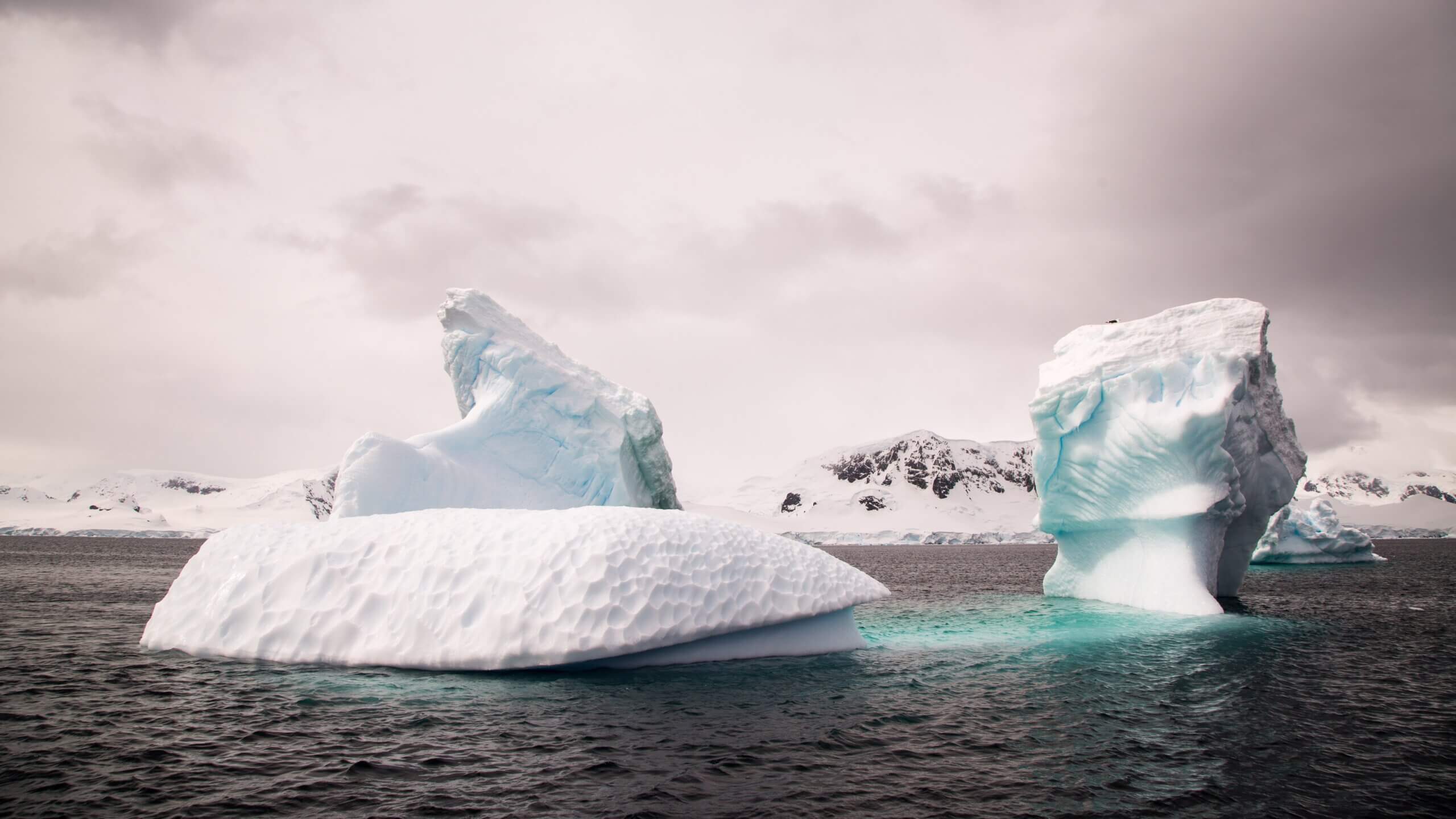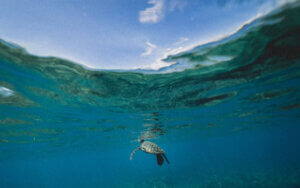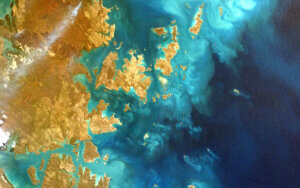In a cold far away place, complex processes set the stage for all life on Earth. Most of us never think of Antarctica and the Southern Ocean. Yet, the survival of this icy place is vital for ocean health and the rest of the world’s survival. We’re partnering up with Mission Blue to help raise awareness for this issue. The first step? Read on to discover how the Southern Ocean facilitates life as we know it.
Antarctica and the Southern Ocean
Far South lies the coldest, highest and driest of all seven continents: Antarctica. Most of Its vast landmass, roughly the size of the United States and Mexico combined, is covered with thick ice sheets.
Around it lies a very special ocean: the Southern Ocean (or Antarctic Ocean). Historically, there are four named oceans: the Atlantic, Pacific, Indian, and Arctic. Fortunately, most countries now recognize this incredibly important frozen part of the world as the fifth ocean.
Despite the harsh conditions, the Southern Ocean is home to many unique and fascinating species such as penguins, seals and whales, and more mysterious creatures like glass sponges and the giant squid.
How the Southern Ocean allows us to exist
Out of sight, out of mind — it’s a geographic reality that plagues the icy waters of Antarctica. However, it is important to know that this ocean’s health is intimately linked to ours.
- Distribution of nutrients across the oceans
Southern Ocean water temperatures range from 28 to 50°F. The cold surface water makes it easier for deeper water to rise to the surface. When the deeper waters rise, they take important nutrients, like nitrate, phosphorus and iron to the surface. These nutrients are vital for marine organisms. When surface waters are warm, nutrients stay trapped below.[1]
Cold water from the Southern Ocean surface flows northward into the Pacific. It then flows back out via the Indian and Atlantic Oceans before returning to the Antarctic. This massive current is known as the global ocean conveyor belt. This is how nutrient rich waters from the South supply to the rest of the ocean maintaining the marine ecosystem.[2]
- Regulates the climate
The conveyor belt transports warm water and precipitation from the equator to the poles and cold water from the poles to the tropics. This regulates the global climate by counteracting the fact that more warmth reaches the Earth’s surface at the equator. Without the currents, temperatures and weather events would be more extreme and a lot less of the Earth would be habitable.[3]
- Feed the world
The Southern Ocean provides food security. Firstly, the circulation of vital nutrients sustains fish populations and humans all over the world. Secondly, the milder climate brought on by the currents allows humans to grow crops in areas that would otherwise be too hostile.[4]
- Takes up heat and carbon
The oceans take up a whopping 90% of the excess heat generated by burning fossil fuels. The Southern Ocean stores 75% of this excess heat! Additionally, it is also responsible for storing 35% of excess carbon from the atmosphere. Therefore, The Southern Ocean is extremely important in preventing climate change.[5]
Human impact on the Southern Ocean
Not long ago it was thought that the oceans were too vast to be impacted by humans. It has become clear that we are more than capable of wreaking havoc even in the most remote oceans. The Southern Ocean is often referred to as “the last pristine ocean.” However, researchers are concluding that this vital ecosystem needs more protection.
1. Melting ice
As a result of climate change, 2020 saw the highest ever recorded temperatures on the Antarctic continent, at over 20°F. Increased temperatures are causing ice to melt at an unprecedented rate. This is bad news for the creatures living here.[6]
The Antarctic krill is especially dependent on the ice. These shrimp-like organisms graze on phytoplankton (microscopic marine algae) that grow on the inside of the ice. Krill populations are projected to decline about 30% this century, due to human-driven climate change. The krill is a keystone species, meaning that without it the whole ecosystem would collapse.[7]
2. Ocean acidification
Higher CO2 concentrations in the atmosphere are acidifying Antarctic waters. When the ocean takes up this CO2 it causes a decrease in the pH level of the water. Acidification is known to have negative effects on a range of marine species. For example, it disrupts reproduction in krill and reduces the number of eggs that hatch.[8]
3. Overfishing
Krill is already the most fished animal in the Southern Ocean and its population has declined by 80% since the 1970’s.[9] Unfortunately, krill is becoming even more popular. Their oily bodies are used as omega-3 supplements, as feed for livestock and fish farming and even in pet food.
Who protects the Southern Ocean?
Antarctica and the Southern Ocean are not governed by a governing body. The majority of the water on our planet falls outside national borders: 88 million square miles (230 million square kilometres).[10] That is the size of that’s the size of every single continent combined, with another Asia, Europe and Africa thrown in. These vast areas belong to us all.
Therefore, Antarctic waters are governed internationally through a commission: Commission on the Conservation of Antarctic Marine Living Resources (CCAMLR). One of CCAMLR’s responsibilities is to designate Marine Protected Areas (MPAs) to protect biodiversity, ecosystem health and provide resilience to climate change.[11] This is very important since less than six percent of the ocean is protected in any way.
But how do we know what areas should become MPAs? Mission Blue works to identify Marine Hope Spots: special places that are scientifically identified as critical to the health of the ocean.[12] These spots are a great guide for ocean conservation efforts. One very important Hope Spot is already a MPA: The Ross Sea. It is largely untouched by humans and is one of the world’s largest marine reserves.[13]
CCAMLR has the power to create three additional MPA’s: the East Antarctic MPA, the Weddell Sea MPA, and the Antarctic Peninsula MPA. If successful, it will be the largest act of ocean protection in history![14]
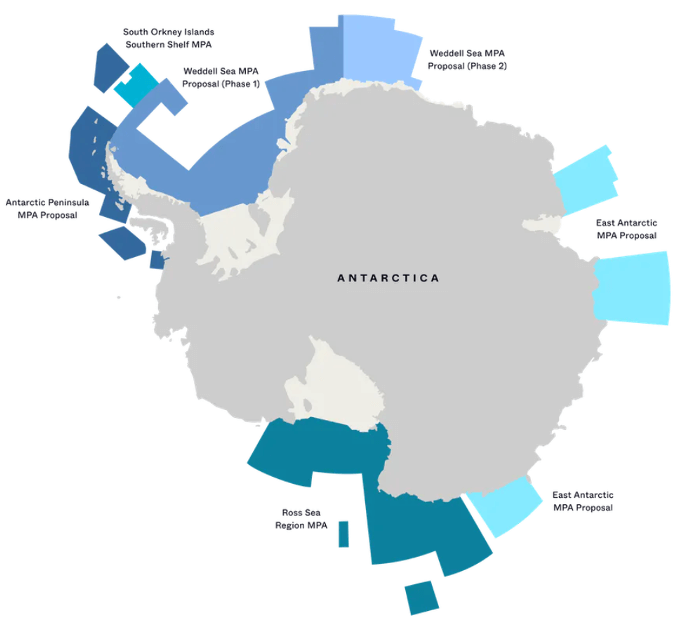
The East Antarctic Peninsula is also considered a Hope Spot. The ice sheet on the eastern tip of the continent is home to many species, like penguins and half of the world’s Ross seal population. It is thought that this region is suffering from climate change more than any other place on the planet.[15]
“If we can’t protect perhaps the most beautiful, most raw place on our planet, can we protect ourselves? Together, we can change the future for Antarctica and for humanity.”
Paul Nicklen: Co-founder, SeaLegacy & Only One
What can you do?
The CCAMLR hears from many parties when making decisions, including the krill industry, which represents a significant lobby capable of transforming efforts to protect the area.[16] We should therefore show member nations that there is an outpour of public support to protect these regions. Sign this petition if you want to show your support. You can also learn more about Mission Blue Hope Spots and donate to help support more Hope Spots. Oh, and we’d be remiss if we didn’t mention that consuming a plant-based diet (including looking for plant-based supplements that don’t contain krill) is another way to help protect our oceans. If you need delicious meal ideas, we’ve got a few.
[1] “Sea surface temperature & chlorophyll”, Earth observatory, earthobservatory.nasa.gov/global-maps
[2] “How will climate change affect the Southern Ocean ecosystems?”, Ocean bites, oceanbites.org/how-will-climate-change-affect-the-southern-ocean-ecosystems/
[3] “An ocean like no other: The Southern Ocean’s ecological richness, significance for global climate”, DownToEarth, www.downtoearth.org.in/blog/climate-change/an-ocean-like-no-other-the-southern-ocean-s-ecological-richness-significance-for-global-climate-74538
[4] “How will climate change affect the Southern Ocean ecosystems?”, Ocean bites, oceanbites.org/how-will-climate-change-affect-the-southern-ocean-ecosystems/
[5] “An ocean like no other: The Southern Ocean’s ecological richness, significance for global climate”, DownToEarth, www.downtoearth.org.in/blog/climate-change/an-ocean-like-no-other-the-southern-ocean-s-ecological-richness-significance-for-global-climate-74538
[6] “If you live on this planet, you can thank Antarctica.”, Only One, only.one/act/antarctica
[7] “The sad fate of krill in the Southern Ocean”, EarthSky, earthsky.org/earth/the-sad-fate-of-krill-in-the-southern-ocean/
[8] Saba G.K., Schofield O., Torres J.J., Ombres E.H., Steinberg D.K. (2012). Increased Feeding and Nutrient Excretion of Adult Antarctic Krill, Euphausia superba, Exposed to Enhanced Carbon Dioxide (CO2). PLoS ONE7(12): e52224
[9] “Decline in krill threatens Antarctic wildlife, from whales to penguins”, The Guardian, www.theguardian.com/environment/2018/feb/14/decline-in-krill-threatens-antarctic-wildlife-from-whales-to-penguins
[10] “Penguins starving to death is a sign that something’s very wrong in the Antarctic”, The Guardian, www.theguardian.com/commentisfree/2017/oct/13/penguins-starving-death-something-very-wrong-antarctic
[11] “If you live on this planet, you can thank Antarctica.”, Only One, only.one/act/antarctica
[12] “Hope Spots”, Mission Blue, mission-blue.org/hope-spots/
[13] “Ross Sea Hope Spot”, Mission Blue, storymaps.arcgis.com/stories/1a1311405bac44b08a20d43e1b5fc719
[14] “If you live on this planet, you can thank Antarctica.”, Only One, only.one/act/antarctica
[15] “East Antarctic Peninsula Hope Spot”, Mission Blue, storymaps.arcgis.com/stories/dfc34a2225ec4e678b358855fcb1686d
[16] Report: Antarctica’s krill fisheries threaten penguins, whales, The New Humanitarian, deeply.thenewhumanitarian.org/oceans/articles/2018/03/19/report-antarcticas-krill-fisheries-threaten-penguins-whales
